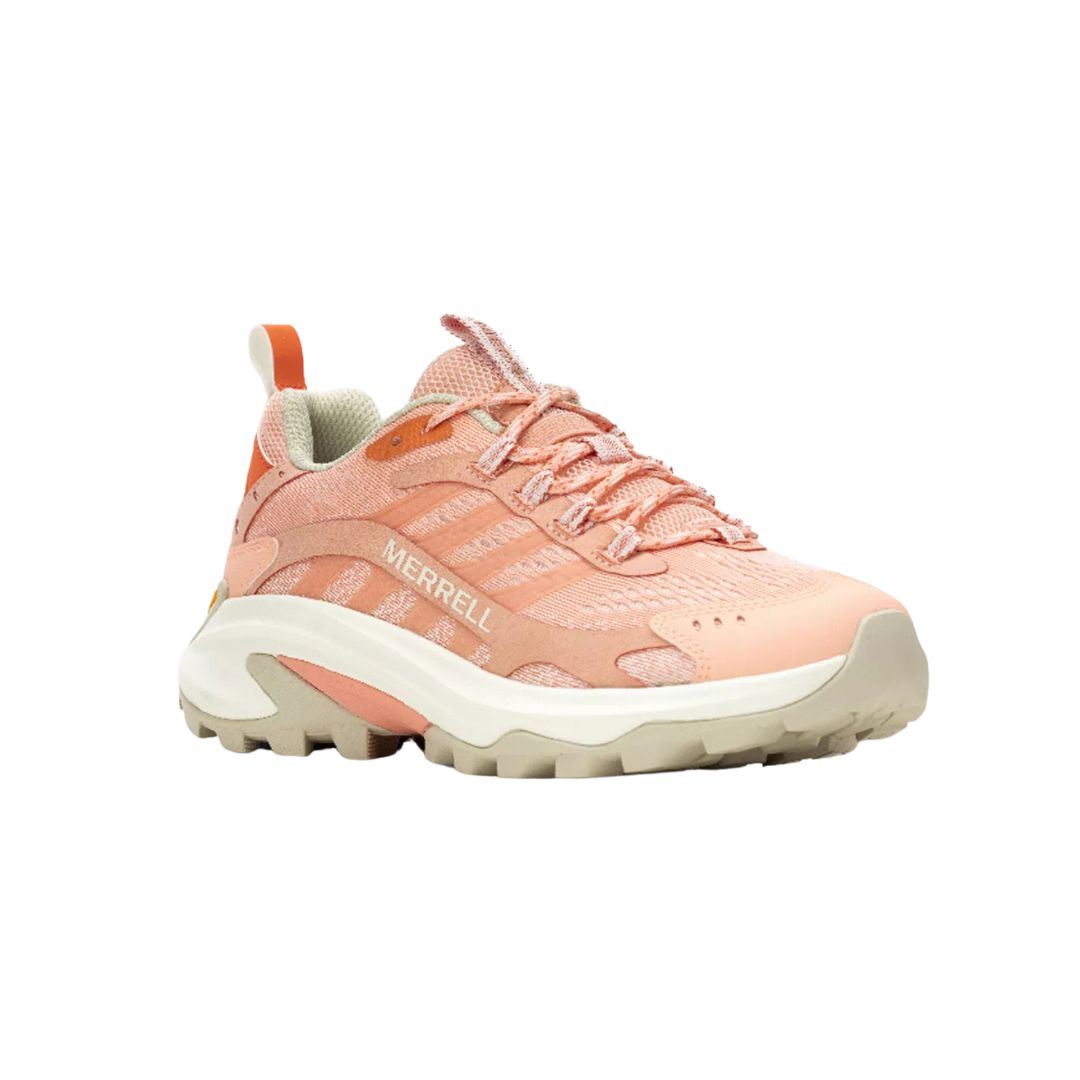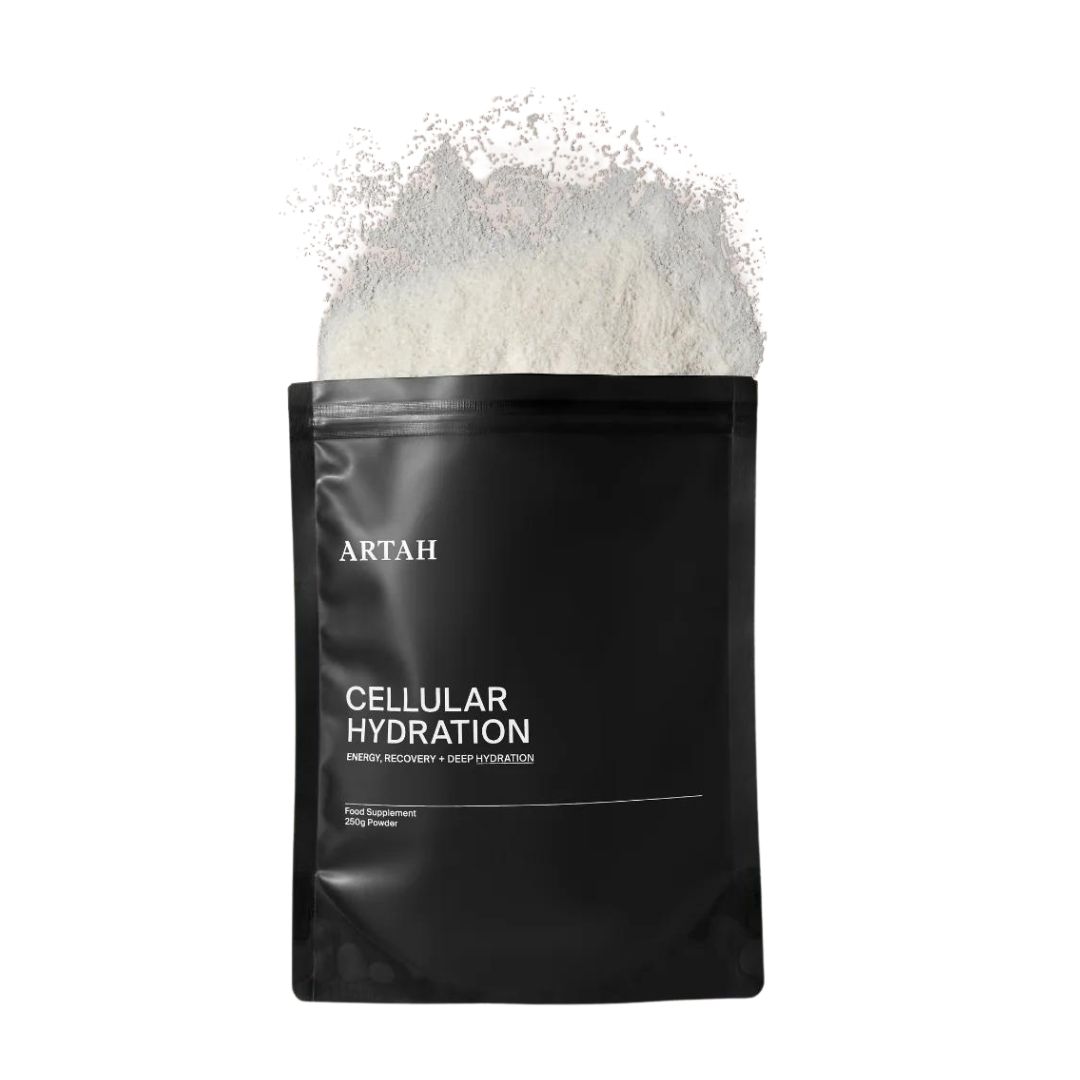I've spent my career analysing wellness trends - trust me, these 14 workouts, health hacks and supplements will go viral in 2025
Wellness isn't going anywhere next year.
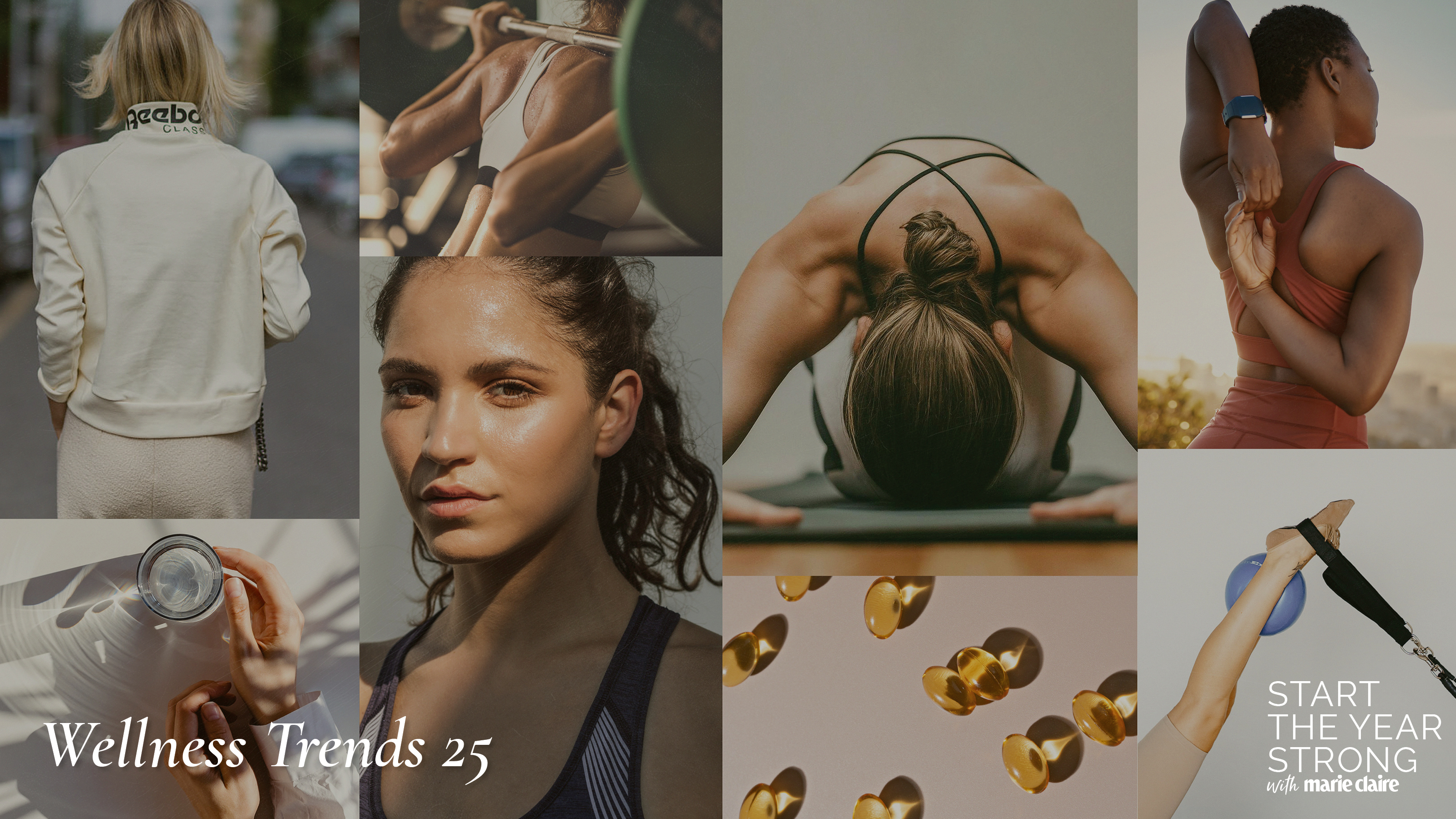
What a year it’s been for wellness, hey? As the Senior Health Editor here at Marie Claire UK, I don’t think I ever could have anticipated the boom we’ve seen.
First came the running craze which saw billions around the globe lace up and make the cardio workout part of their weekly norm, with some even paying Strava mules to up their mileage for them. Then, the influx of interest in glucose monitors - Zoe, I’m looking at you - cementing them as the “it” accessory of the year, with the likes of Davina McCall, Carrie Johnson and Serena Williams all raving about the devices. Not forgetting more people tackling Hyrox and streaming trending Pilates workouts than I knew physically possible.
UPFs (that's Ultra Processed Foods, FYI) became one of the buzzphrases of the year, with Professor Tim Spector making headlines globally with his take on opting for a minimally processed, wholefood approach to nutrition where possible. And, come June, we were treated to a summer of sport, with the Euros hosted in Germany and the Olympics in Paris and MC UK lucky enough to have Team GB stars Daryll Neita and Laviai Nielsen on our cover. Alternative supplements like Lion’s Mane, apple cider vinegar, and magnesium also flew off shelves this year - all three were on Holland and Barrett’s most-sold supplements of the year list, with the brand selling 44% more magnesium than the year prior.
While for the most part, 2024 has felt overwhelmingly positive when it comes to encouraging people to move their bodies in a way that works for them and building a healthy lifestyle over opting for fad diets or quick fixes, trending diabetes-drug-turned-weight-loss-jab Ozempic has also piqued interest, with the NHS rumoured to prescribing a similar brand Mounjaro from as early as March 2025 for people with a body mass index (BMI) of at least 35 and at least one obesity-related health problem.
One thing’s for certain - wellness isn’t going anywhere in 2025, and we’re only going to get more attuned to how our daily habits impact how we look, feel, and live. Stats from the Holland & Barrett annual wellness report cement this, predicting that the worldwide wellness market will be worth $8.4 trillion by 2027 - an impressive growth rate of 8.6%.
So, what’s in store for the year ahead? I’m incredibly lucky to be connected with some of the very best industry experts, thought leaders and innovators and have attended more press events showcasing next-gen innovations than I care to count. For my predictions for what’s in store for the world of wellness in 2025 - keep scrolling.
Meet the wellness trends that will dominate in 2025
1. Home workouts will get (yet another) levelling up

It’s no news that we’re a nation of home workout lovers. While we’re certainly moving more than in previous years - the PureGym annual report found that 48% of us regularly exercise, a 3% increase from 2023 - one 2020 study concluded where we workout has changed, with as many as one in five Brits never returned to the gym post-pandemic.
Marie Claire Newsletter
Celebrity news, beauty, fashion advice, and fascinating features, delivered straight to your inbox!
Pair the fact that we all quite enjoy working out at home with the cost of living crisis and getting a sweat on from your living room never looked so appealing. But there’s also been a noticeable improvement in the quality of home workouts on offer, with top trainers realising that without a genuinely effective home offering for their clients, they risk losing out on customers. The result? An influx of high-quality, enjoyable and attainable home sessions and next-gen machines and gaming sets becoming more affordable and simple to use, too.
And home workouts look set to go from strength to strength this year, with foldable at-home machines, the VR gamification of fitness and AI-powered plans, workouts and even weights promising to revolutionise the market. If this year’s figures are anything to go by, Pilates tools will continue to soar in interest, too, with new aesthetically pleasing yet effective designs from cult-favourite Bala.
One product that’s particularly piqued my interest? The Technogym Connected Dumbbells, a 12-in-1 weight that promises to personalise your load prescriptions and tailor your workout based on your performance (in short: it’ll tell you what weight to lift, how many reps to do, and also warn you if you’re not lifting with correct form). They’re not cheap, though, promising to set you back an eye-watering £2.5k…
2. Functional athleisurewear fashion is here to stay
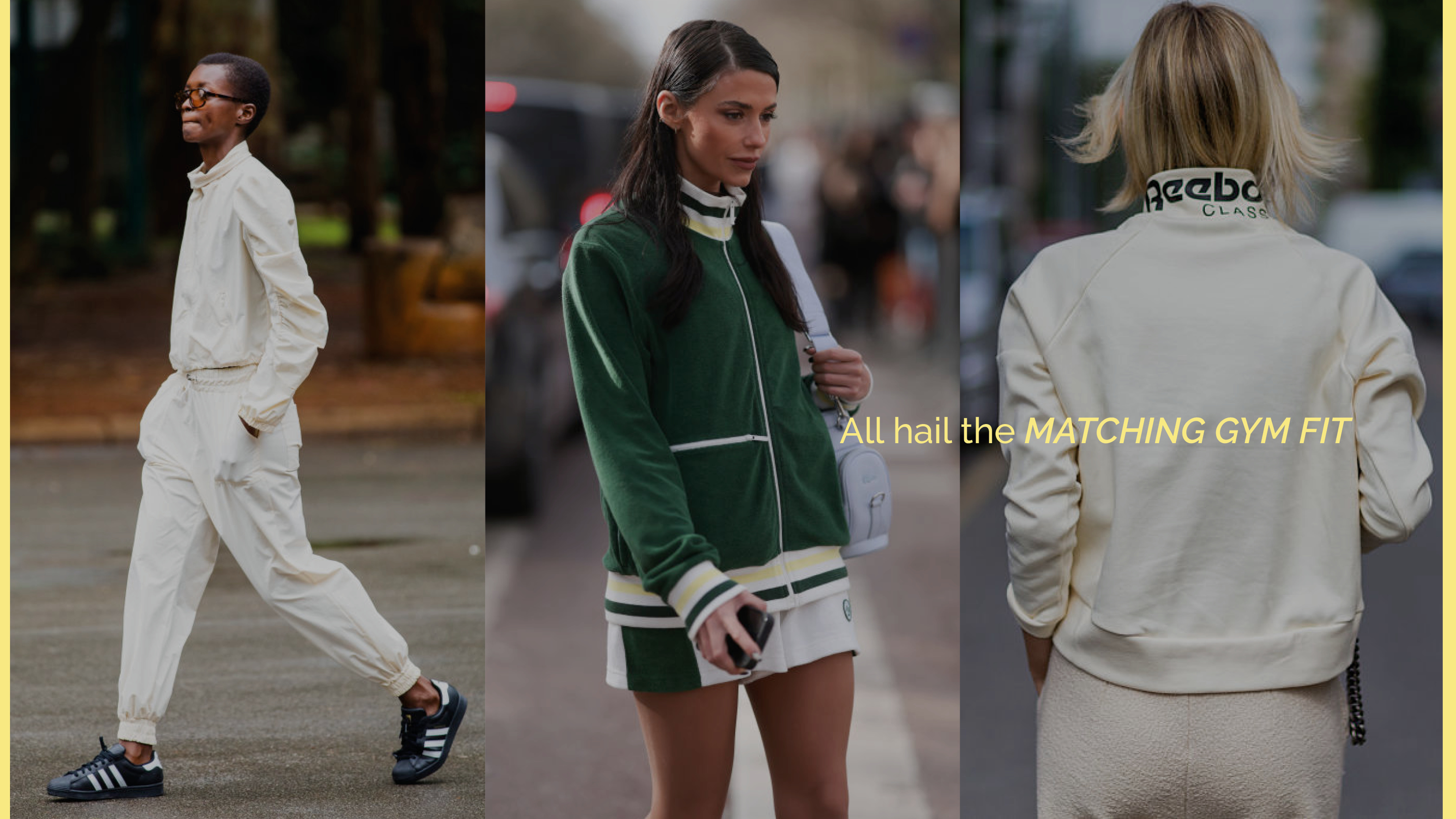
Am I delighted that fashion-forward but also functional athleisurewear is well and truly having a moment? Yes, yes I am. I’m a Health Editor at a fashion magazine, you see, and for too long, fit kit that worked didn’t look good. Yet research predicts that demand for athleisurewear is set to grow by 16.4% in the UK between 2023 and 2027, which will make it a nearly £14 billion pound industry.
We’re already seeing this growth take root - cult brand and Kardashian favourite Alo Yoga launched in the UK this year with three stores, and the reported go-to fit kit brand of megastar Harry Styles, Vuori, opened the doors to its second UK store and new central London flagship just a month ago. There’s demand for clothes that do more - customers want innovative, comfortable, athleisurewear that they can also wear to work or during their weekends. In short: demand is high for the styles that seamlessly blend into our constantly busy modern lives.
Strava’s annual Year In Sport review concluded the same, also finding that 2025 will see continued interest in coordinated gym outfits. Their stats show that fitness fans of all ages are keen to invest in workout clothes that match, with many a runfluencer sharing weekly inspiration on their social pages. My personal go-to? Head-to-toe blue, with coordinated fits in this colour another of Strava’s predictions for the year ahead.
3. Biohacking will continue to rule

You’ll likely have heard the term biohacking, but might not be entirely sure what it actually means. Or, you might fully understand the term but have concluded that it’s way too "woo-woo" for you. Let me convince you otherwise, though, as 2025 looks set to be the year biohacking will go mainstream, with Google searches for the term surging by 94% in the past year.
In short, the term describes “hacking” your biology in order to look and feel your best - and people are all in. According to James Bellis, biohacker and founder of Balance Coffee, the global biohacking market is projected to grow around £40 billion in the next few years, reaching £52 billion by 2027. “People globally are embracing new types of wellness tools to optimise their health, utilising science alongside personal experimentation to fine-tune their routines and improve physical and mental performance,” he shares.
So what does it actually involve? And why will it be big next year? Well, as the expert explains, optimising health through nutrition, technology, and habit-building strategies tailored to individual biology aligns with the ongoing shift toward personalised health solutions. “With the rise of wearable tech, functional foods, and adaptogenic supplements, biohacking empowers individuals to address modern challenges like burnout, focus, and boosting longevity.” And he stresses that it’s not just a trend - rather, a movement toward proactive health management and living a healthier, happier life.
Immunity plays a key theme in the biohacking sphere, and people will be focusing on brain-boosting vitamins and nutrition this year, too. Holland & Barrett sold 41 packs of Vitamin D an hour this year and are predicting that ‘25 will be the year brain-boosting nutrition goes beyond basic nutrients like omega-3s and antioxidants. As medical biochemist and founder of MindSpire Jane Ollis explains, “By 2025, brain health will become a key focus for everyone. Through personalised diets, targeted nutrients, and optimised sleep, we’ll be able to fuel our brains for peak performance, boosting productivity, mental agility, and long-term cognitive wellbeing.”
4. Hydration will be a top priority

You’ll likely have noticed the 101 vitamin waters, electrolyte-enhanced shakes and mineral-boosted drinks stocked at supermarkets this year - but functional beverages and holistic hydration look set to stay for 2025, tying in with the rising “food-as-medicine” approach to how we fuel. Tapping into a growing audience of busy, time-poor health aficionados looking for easy-to-use products that boost their wellbeing in multiple ways, expect more nootropic-enhanced, electrolyte-replenishing beverages to hit the market next year.
Rhian Stephenson, nutritionist, naturopath and founder of supplement brand ARTAH agrees, adding that consumer trend research highlights hydration as the number one food and beverage health benefit desired and purchased by consumers. And, as pharmacist and co-founder of INGENIOUS Pupinder Ghatora points out: “Hydration isn’t just about drinking water, it's about replenishing vital minerals and electrolytes that support optimal bodily function.” Shivraj Bassi, CEO and founder of Innermost agrees, adding that consumers are recognising that simply drinking water may not always suffice. “The emerging trend of "hydration plus” or “hydration 2.0” emphasises beverages that not only replenish fluids but also deliver additional health benefits. Hydrating products are beneficial not only for athletes but for everyday life thanks to their ability to replenish essential fluids and electrolytes, which in turn are critical for maintaining bodily functions like temperature regulation, energy production, and muscle performance,” he shares.
While Stephenson opts for the ARTAH Cellular Hydration electrolytes each day, Ghatora’s personal favourite is a glass of water with a pinch of Pink Himalayan Salt.
5. AI-fuelled fitness will reach new levels
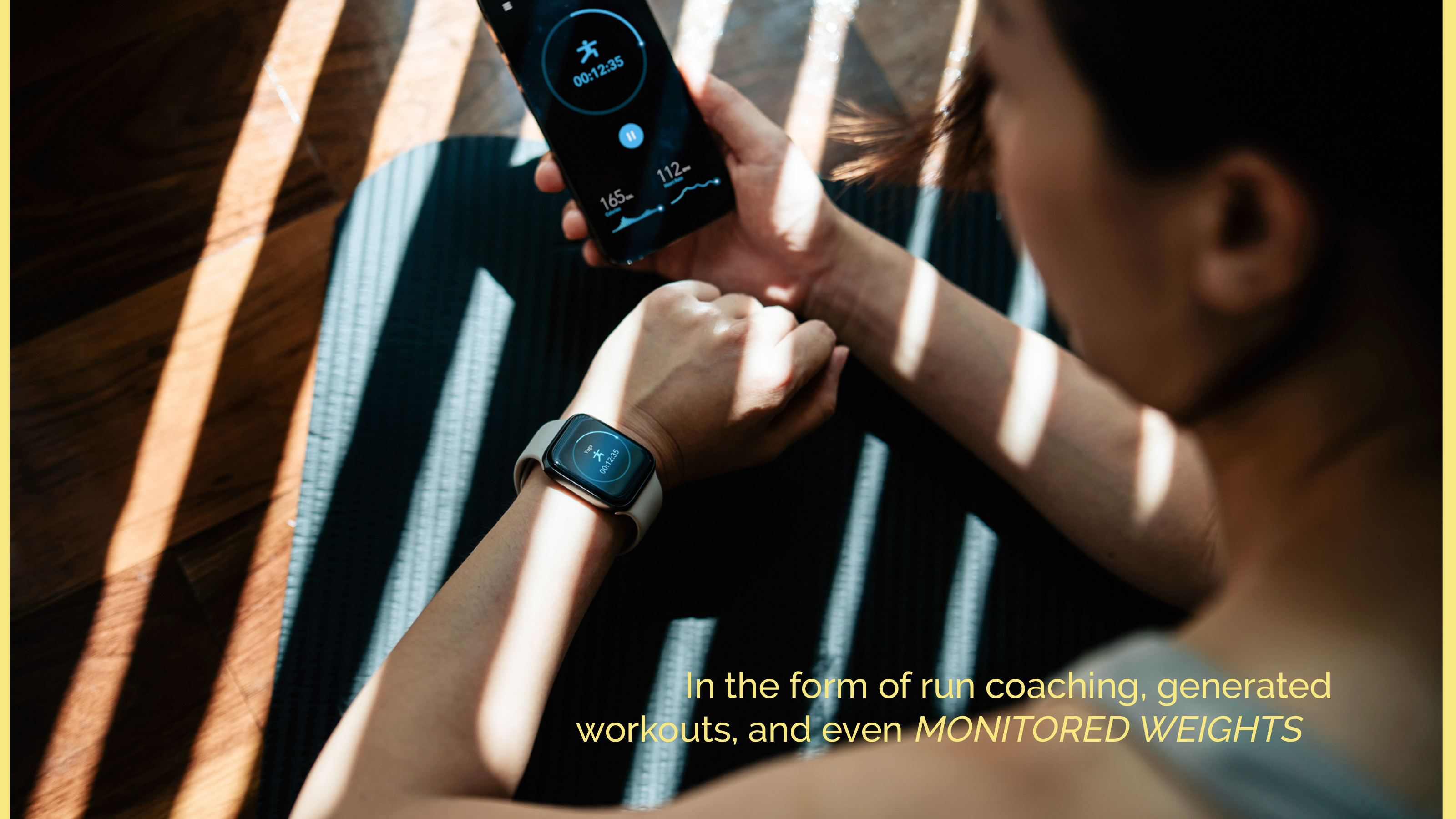
As we've touched on, AI-powered tech, workouts and trainers are re-shaping the wellness industry as we know it and ringing in a new era in health and fitness. From run coaching apps like Runna and Coopah to Strava’s new AI workout analysis, there’s no ignoring the way technological advancements are changing the way we move.
As Rowan Clift, Training Specialist at AI-based fitness and lifestyle coaching app Freeletics explains, the global AI fitness market is set to exceed $35.6 billion by 2030, with fitness app users nearing 850 million. So what does this mean for you? “Expect adaptive workout plans, real-time feedback, and predictive analytics that empower smarter, more personalised training,” he shares. And he reckons we’ve only just scratched the surface when it comes to AI and health. “As tech advances, the next wave of AI-enabled fitness will bring unprecedented levels of personalisation and interaction to training programs.”
Do be warned, though - some trainers are passionate about training IRL as opposed to with a bot. As Phil Carpenter, Personal Trainer and Assistant Gym Manager at PureGym Portsmouth warns: “While AI tools can be useful in delivering generic training programmes or suggesting exercises for different goals, I’d really only recommend people use it as a starting point and always fact-check suggestions and instructions. AI can’t compete with a human expert who understands your limits and can motivate you. Plus, there are times when AI gets it wrong.”
Sander Werring, CEO at Polar, agrees, adding: “While artificial intelligence is transforming fitness, its potential comes with a critical caveat: the recommendations are only as good as the data and algorithms behind them. We believe that AI should enhance, not replace, science-backed insights, as poorly implemented AI in fitness apps can lead to generic or even unsafe recommendations.”
6. Longevity is the new youth and looks set to reimagine ageing
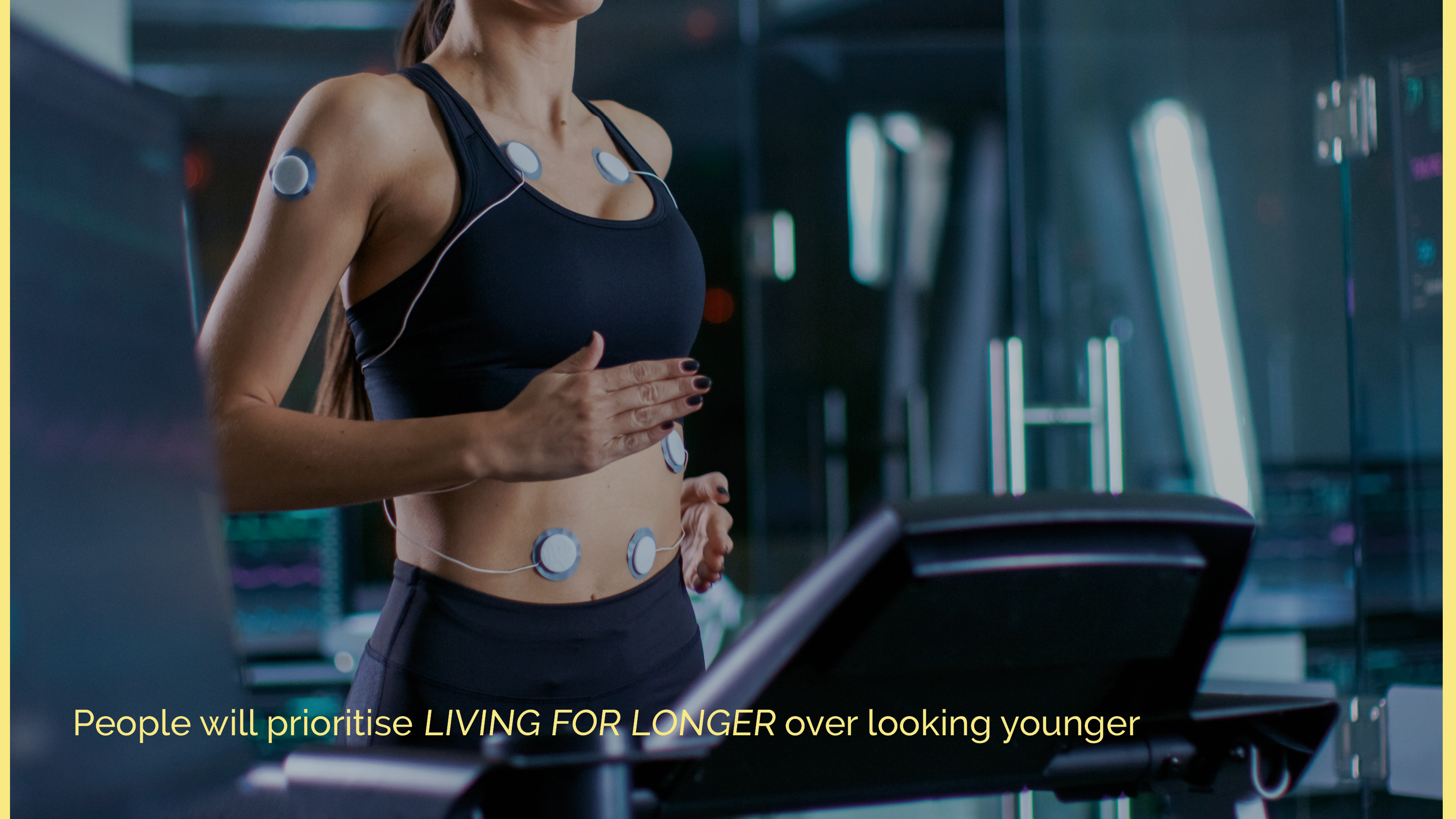
Pop-up IV drip stations, blood panels, and in-depth, personalised health reports have become pretty standard this year, so it’s probably no surprise to hear that 70% of UK consumers invested in more longevity products this year than ever before, with over half - 60% - of consumers confirming that they consider it “very” or “extremely” important to purchase longevity-boosting products or services. Interest in longevity is certainly up - so why are we so fascinated with the concept of challenging our inevitable decline?
As Dr Mohammed Enayat, founder of the UK’s leading longevity and functional medicine clinic HUM2N, shares, “The demand for long-term wellness is surging as the global 65+ population is projected to double by 2050.”
While Stephenson acknowledges that the trend isn’t without its issues, she firmly believes that it’s the best and most important trend out there. “There's a lot of backlash about the longevity trend at current because of certain extreme biohackers and longevity enthusiasts,” she explains. “But, at the root of it, it’s helping motivate people to live healthier lives, more consistently, for as long as possible.”
Take Dr Kara Fitzgerald, the author of Younger You, and her eight-week clinical trial as an example. “She and her team looked into how diet and lifestyle intervention can be used to reverse biological age, with a “'treatment' including diet, sleep, exercise, relaxation guidance, and supplemental probiotics and phytonutrients,” shares Stephenson. “At the end of the eight-week trial, the treatment group saw a 3.23-year decrease in their biological (or cellular) age.” Bottom line? “Working on our foundational health and adding key supplements, like NAD+ bolstered with phytonutrients, is showing people what is possible when we make health a priority rather than addressing it sporadically after Christmas and before bikini season,” she concludes.
7. Personalised workouts and remote personal training are in
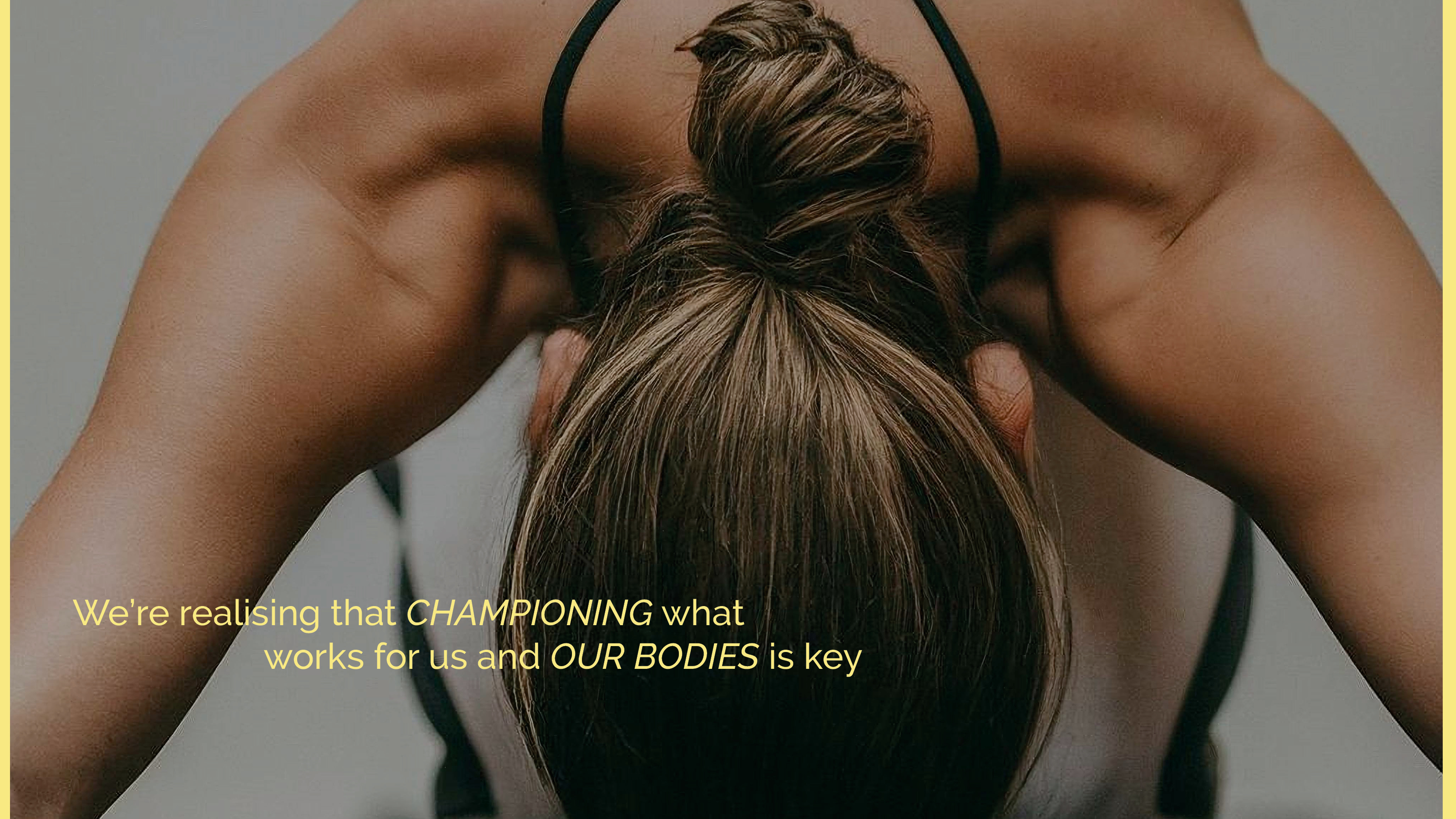
According to PureGym’s 2025 wellness report, remote personal training ranks as the top trend to watch for 2025, with a huge 414% spike in interest over the past twelve months. And according to Jodie Leith, Personal Trainer at PureGym Leeds, personalised sessions will only continue to grow in popularity. “It’s very clear remote training will be a big thing next year,” she explains. “It’s largely a result of remote working post-pandemic - people want access to training that’s personalised to their goals, in a format and time that suits them.”
Other perks of online training with a qualified pro span working with PTs who specialise in your training objectives and cutting out the costs and travel times associated with gym memberships. “In 2025, lifestyles are busy and not everyone can commit to set times in the gym, so trainees and trainers will both be benefitting from the greater freedom remote training offers – and there will no doubt be fewer cancelled sessions, too,” she concludes.
Ghatora agrees, adding: “The era of one-size-fits-all fitness is giving way to precision training, where programs are tailored using individual’s data for improved outcomes. Precision training isn’t just about physical performance, either, but also about mental endurance and recovery. I suspect that in 2025 precision training will continue to dominate the wellness landscape as technology and science encourage highly customised health solutions.”
8. Tracking fatigue is real and will encourage a shift away from data overload

And on that note - experts are predicting that we’re likely to get tracking fatigue next year, warning that in a market flooded with wearables and fitness-tracking apps, not all data is created equal. “As users grow more discerning, the focus is shifting towards trusting sources with a strong foundation in scientific research,” shares Werring. And it’s crucial to consider the reliability of the data you’re tracking, warns the CEO. “Your fitness level, progress, well-being, and recovery - both short and long-term - all depend on accurate information. Is the data you’re using backed by science and validated with integrity, or is it simply a generic recommendation? How confident are you in the reliability of your source?".
Anthony Fletcher, Exercise Physiologist, Biomechanics Coach and co-founder of Onetrack Club, agrees, adding that data can often be disconcerting and encourage you not to listen to your body. “I personally believe that all data is dangerous if you’re not prepped or educated on what that data means,” he explains. “There's a place for everything, but timing and education are key.”
Their take? “This movement also reflects a growing trend towards balanced health tracking and pairing intuitive body awareness with actionable data,” adds Werring. While it may seem like all the fitness influencers and experts on your feed are juggling insights from two to three wearable devices at a time, you really only need one scientifically-backed, expert-approved wearable that you can rely on (for me personally, it’s my Garmin Forerunner 935, and I’ve tested a lot in my time). But for many, even this will be too much - 2025 will be the year that we get more intuitive with our tracking, listening to how our body feels rather than prioritising a readiness score from a device that may be inaccurate.
9. Research will finally prioritise women's health

It’s no news that women's health is one of the most understudied fields in health and medicine, with medical research long favouring male-focused studies. 80% of drugs have never been tested on women, and Professor Jennifer Garrison talks regularly about how, for over a century, preclinical studies primarily used male subjects, dismissing female hormonal cycles as “noisy.”
But Baran Dilaver, co-founder of Wonderfeel, feels confident things are going in the right direction this year and predicts some serious innovation and progress in the field. “Women’s health has faced systemic neglect, with historical underrepresentation and underfunding in research leading to significant disparities,” he explains. “But what the biases above underscore is the urgent need for equitable research and healthcare practices that address the unique needs of women.”
And in 2025, he thinks we'll continue the long journey to equality. “Women's health is entering a new era, where advancements in longevity science, cultural advocacy, and technological breakthroughs are converging to address long-overlooked challenges and unlock transformative solutions,” he goes on. And he's particularly excited about the advances when it comes to longevity, not to mention the breakthroughs in science and technology addressing challenges that have been neglected for far too long. “As the field of longevity science continues to grow, women’s unique health needs - particularly around menopause, fertility and hormonal health - are finally taking centre stage, and innovations in diagnostics, AI, and groundbreaking drug discoveries promise to revolutionise women’s health, addressing challenges that have been neglected for far too long.”
10. Pre and probiotics are out and postbiotics are in

Gut health has been headline news for years now, with a tonne of research backing up just how essential a healthy gut microbiome is for everything from skin, to metabolism, to mental health. But according to Jessica Kane Berman, CMO of BodyBio, postbiotics will be in the spotlight this year. “The newest biotic, postbiotics are the sister compound to pre and probiotics, and in the last year, a wealth of studies have been released on their efficacy,” she explains.
The one she’s most excited about is butyrate, which has been preliminarily found to help with symptoms of IBS thanks to its ability to fuel your gut cells and strengthen the gut lining. “Essentially, butyrate is a short-chain fatty acid (SCFA) molecule produced by bacteria in the colon. It’s a vital source of energy for gut cells and helps to promote gut barrier integrity, allowing cells to absorb nutrients, keep waste and toxins out, and help reduce inflammation.”
Of the three “biotic” categories, she believes that postbiotics may just become the most revolutionary as we learn more about their effects on total body health and their potential implications for healing. But while Stephenson agrees that postbiotics will be trending this year, she warns that it’s vital not to replace your pre- or probiotics with them yet. “They have a completely different function than pre and probiotics, so I wouldn't view them as an either-or. Postbiotics are the metabolites or compounds that the bacteria in our gut produce when they metabolise prebiotics. They have numerous health benefits across different aspects of health; for example, they can help reduce inflammation, improve blood flow, support immune function, support athletic performance, and enhance cognitive health.”
11. We’ll focus on the importance of fibre, not protein
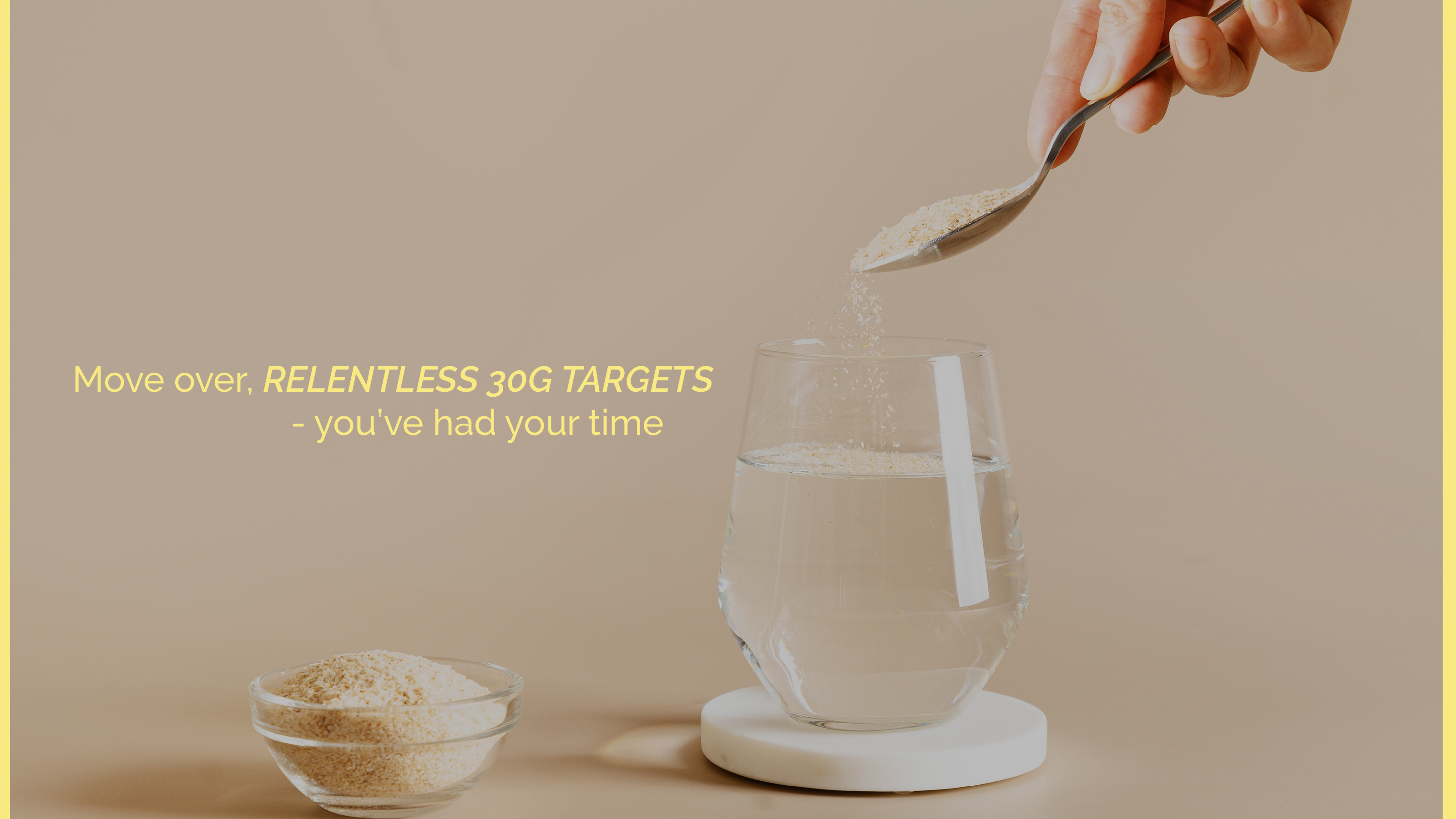
Tim Spector and ultra-processed foods got more airtime than Donald Trump this year, and with it came a new-found focus on the importance fibre plays in our day-to-day. As Emily Reed, Head of Innovation Pipeline at Holland & Barrett points out, we’re seeing a notable shift towards prioritising fibre for its comprehensive health benefits. “90% of us aren’t getting enough of it - on average, Brits only eat 18g of the 30g NHS recommendation,” she shares.
So, why is fibre so important and what health benefits will we notice if we start upping our intake? “Fibre is increasingly valued for its role in promoting gut health, enhancing satiety, and supporting metabolic function, not to mention fibre-rich products contribute to a healthy microbiome, which is linked to improved mood regulation, immune support, satiety and overall metabolic health.” As Stephenson points out: “Fibre is making a comeback, and for good reason. With the rise of UPFs and a less-than-optimal fruit and vegetable intake, there is a long way to go to hit fibre goals. But fibre is so important to every aspect of health, and specifically, to the health of the microbiome, as well as helping appetite control and satiety, which have become more accepted since the rise of GLP-1 drugs (fibre itself increases natural GLP-1 signalling).”
That’s not to take away from the fact that protein is absolutely essential in our diets for satiety, muscle growth, and overall wellbeing. Fibre isn’t replacing protein and your 30g per meal protein target is still important - this year, though, hitting your fibre target will be getting more attention as something that boosts health prioritised alongside protein.
12. New tech will encourage an enhanced focus on mastering our metabolisms
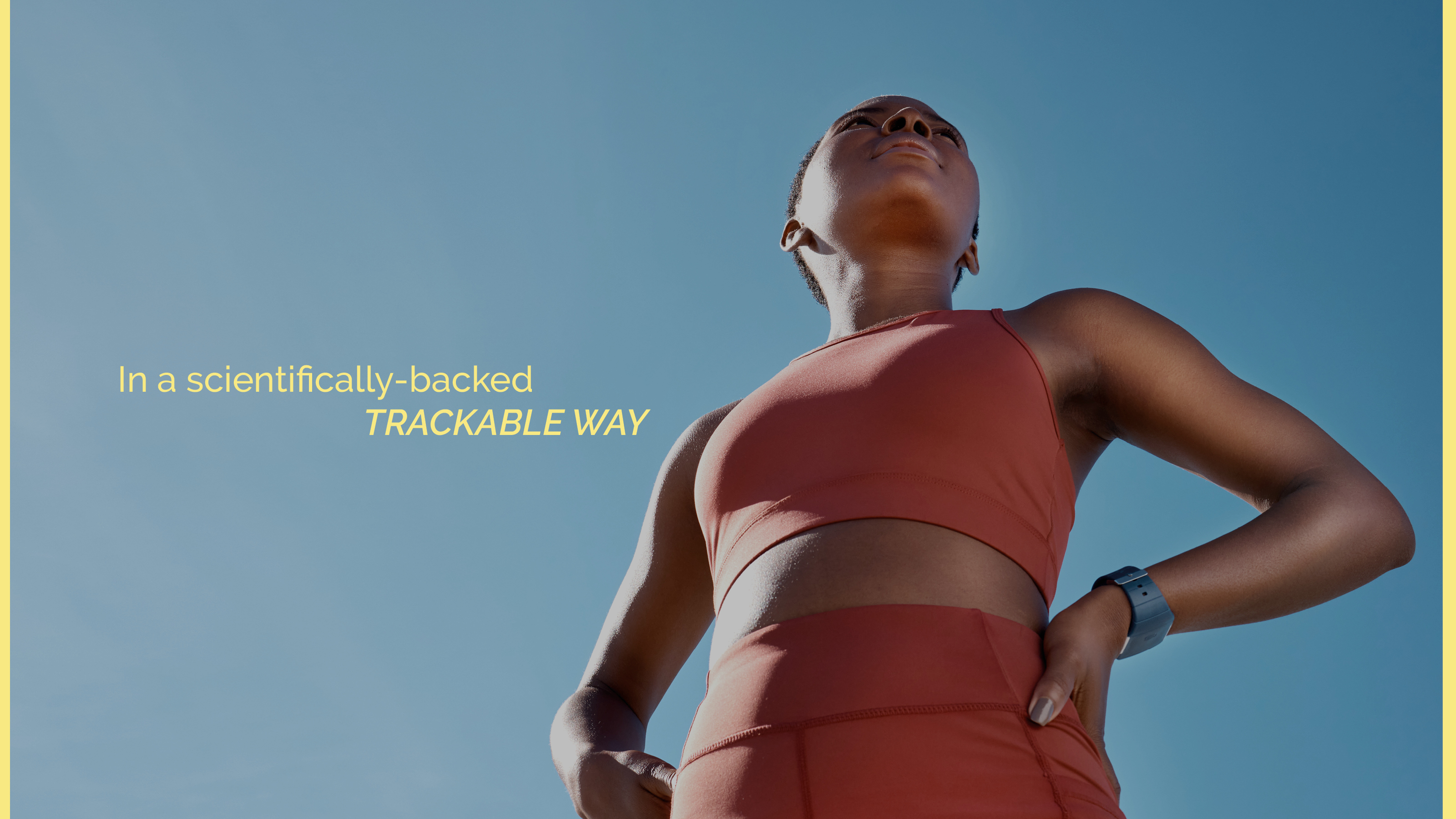
I first remember reading about the power of our metabolism when I was twelve years old in one of my Mum’s OK! magazines. While thankfully times have moved on since the toxic diet culture of the early noughties - we know no one food or supplement can “supercharge” metabolism, and a healthy, balanced, consistent lifestyle is the simplest way to nurture yours - there is renewed interest at current in the idea of tracking and monitoring yours with next-gen, scientifically backed devices.
Not sure what your metabolism actually is? As Michal Mor, Chief Growth Officer and Co-founder at Lumen, explains: “Your metabolism is your body’s engine. It’s what keeps you alive and fuels you through your day.” Reed adds: “The term metabolism encompasses all the chemical processes that happen in our cells. Metabolic health governs everything from energy levels and our ability to fight off disease to how quickly our body ages biologically, even skin regeneration.”
“There was a time when we only talked about a ‘fast’ or ‘slow’ metabolism in the context of weight loss, but that will change in 2025,” continues Reed. This year, we’ll learn that our metabolisms can be the root of many common illnesses and issues, including fatigue, weight gain, and sleep disorders, the experts believe. “Researchers and the medical community have known this for years, but until recently, the only way to measure metabolism was very costly and specialised in hospitals and labs,” Mor adds.
This year, look out for plenty of literature, tools (we're predicting even more interest in the Lumen tracker, specifically) and experts sharing ways to reset or retrain your metabolism for a longer, healthier life. Just watch out for the fad diets…
13. Exercise will continue to be a social moment
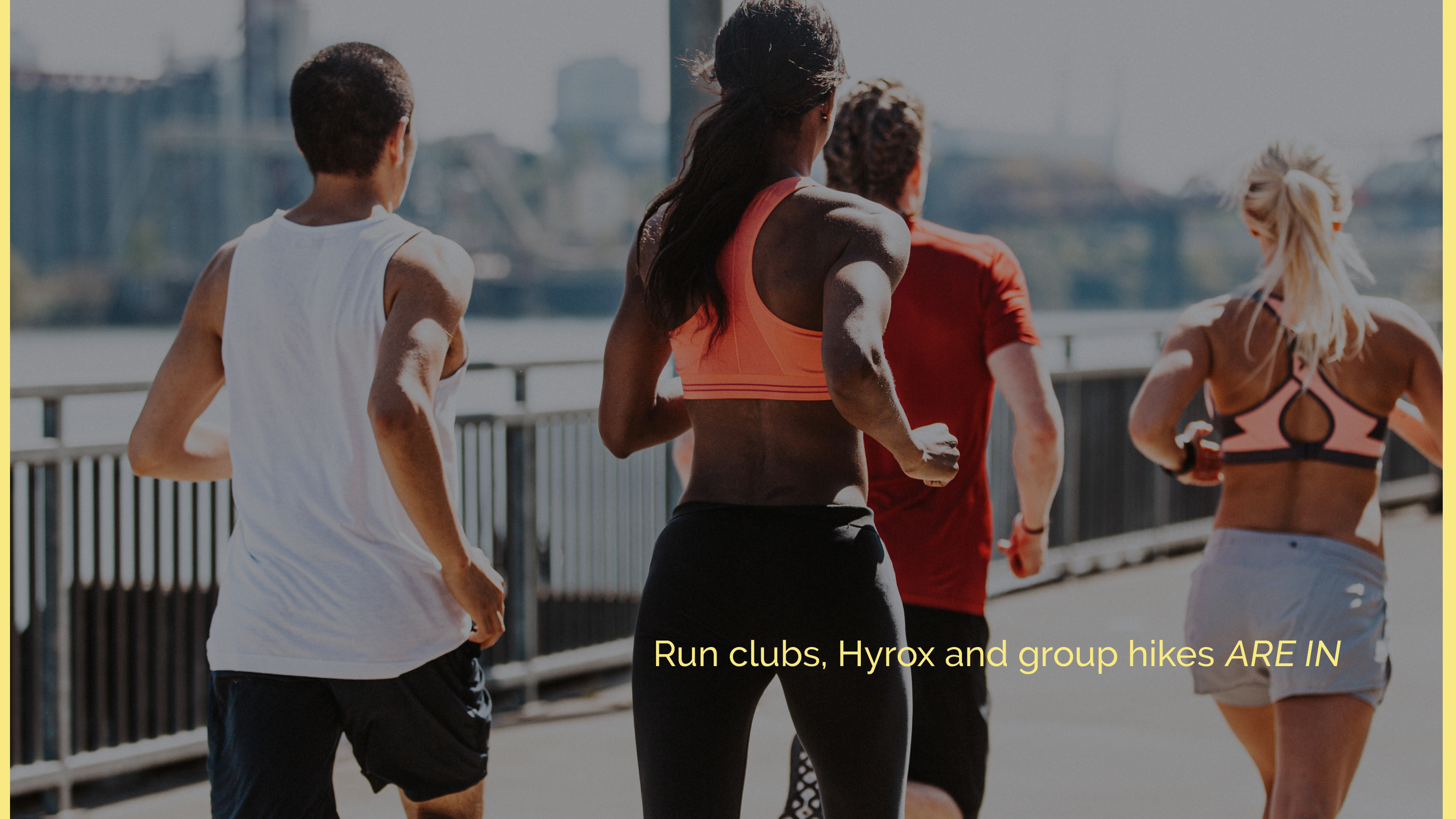
Fun fact: according to the Strava Year in Sport review, group workout activities were up 13% this year, with their stats revealing an exponential rise in run clubs and group activities (we’re looking at you, Hot Girl Walks). And it’s likely no surprise that 58% of those surveyed made friends through fitness this year - we’ve long heralded the power of group activity here at MC UK, with working out with others scientifically backed to boost fitness, accountability, and enjoyment levels.
Working out together isn’t only strengthening our social connections, but our bodies, too. Case in point: There was a 40% average increase in activity length across runs, rides, and hikes when people worked out as a group (that’s ten people or more, FYI) as opposed to on their own, meaning people are likely to workout for longer if they do so in company. And interestingly, women were the ringleaders when it came to working out as a group - there was an 89% increase in women joining Strava clubs this year compared to 2023.
I for one can attest to this - my marathon training miles seem to fly by if I’ve got my sister or a friend to chat to, and it’s far less monotonous if you’re catching up or even just keeping quiet company for the mileage. As Zip Allen, Strava’s Chief Business Officer, explains, "It’s an exciting time for the global active landscape, with people increasingly turning to exercise to find community and build social connections. The ways in which people lead an active lifestyle are constantly evolving but one thing’s for certain - it’s about more than just moving, rather, about community and connection.”
Running had a particular moment in 2024 which will continue into next year, and group challenges like Hyrox are here to stay, too, with a 307% increase in Google searches for the workout in the last year alone. Jayne Scott, Personal Trainer and Assistant Gym Manager at PureGym Warrington who’s competed in Hyrox both nationally and internationally, shares that the latter has really taken the fitness world by storm. “Hyrox is for everyone and is flexible for varying fitness abilities – you don't require specialist skills and because of the range of exercises it incorporates, it instantly feels more enjoyable and inviting than say, running for an hour. On top of that, there’s a real community aspect at the heart of it. You can take part as a couple and eeryone is cheering each other on, no matter their age or ability”.
So which will it be for 2025 - a half marathon or Hyrox?
14. And on that note - weight training is going nowhere
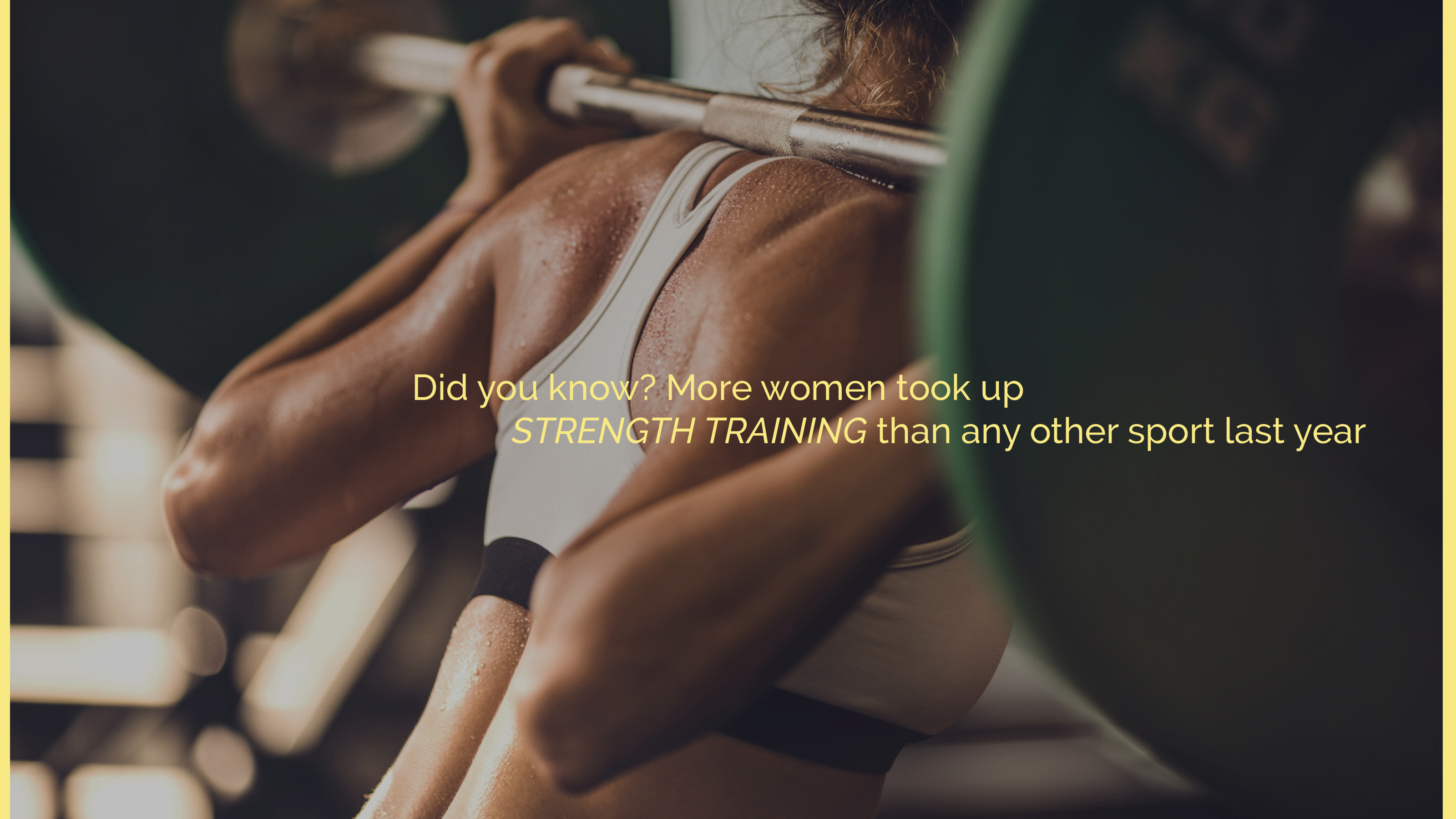
And last but by no means least - weight training will only go from strength to strength in 2025. Weight training took the crown as the fastest-growing sport type among women last year, with Strava seeing a 25% increase in weight training workout uploads last year. “This is really significant, and it's major that weight training was the fastest growing sport type among women on the platform,” shares Allen.
So why is this noteworthy and why does it mean that weight training will continue to be a staple in people’s workouts next year? In short, because it indicates that we’re reaping the many rewards of strength training and using it to support our functional fitness, too. Allen can attest to this: “What I love most about the weight training growth we’ve seen this year is that it indicates how the active landscape is changing. It shows that women are leading the way in seeking new ways to be active to reach their goals,” she shares.
So, question: What will wellness look like for you in 2025?
Shop MC UK's go-to health products now:
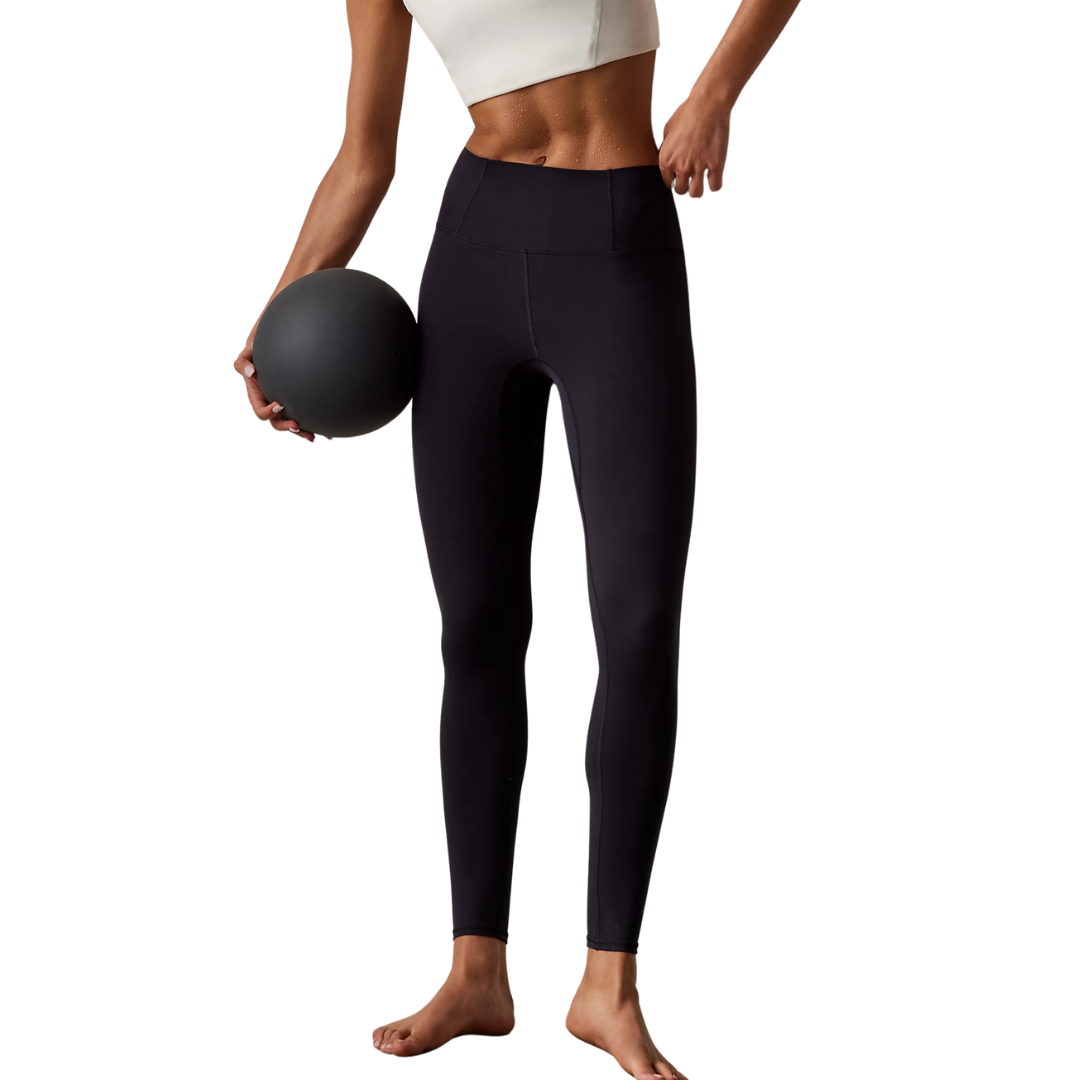
We're big fans of Free People fit kit here at MC UK. Their Never Better leggings, in particular, are butter soft, supportive, and will see you through any type of movement. Plus, the range of colourways gets a yes from us.

While this is a high price point for a workout mat, it's one of the best quality options on the market, offering ample soft, cushioned and comfortable padding for your home workouts.

Pilates will continue to rule for 2025, and having tested, we love these super soft, flattering and comfortable Pilates socks from Alo Yoga. They've got extra grip on the sole to help you maintain your moves on the Reformer or mat, too.
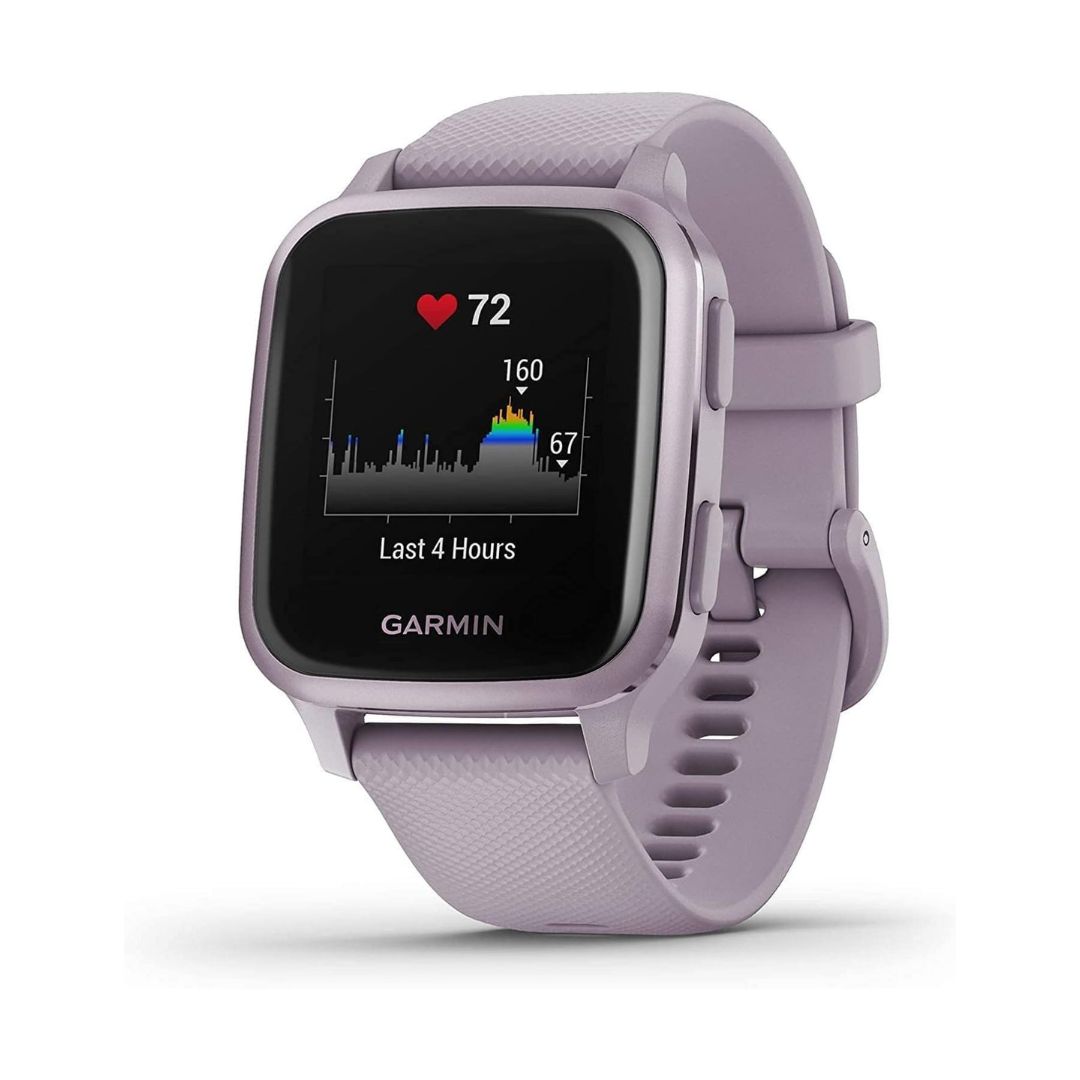
As I touched on, I'm a big advocate for the Garmin fitness trackers and think they're some of the best on the market for tracking your overall health stats without the data becoming overwhelming. The Venu Square design is one of the most aesthetically pleasing and promises to blend seamlessly with your work wear.

Ally Head is Marie Claire UK's Senior Health and Sustainability Editor, nine-time marathoner, and Boston Qualifying runner. Day-to-day, she heads up all strategy for her pillars, working across commissioning, features, and e-commerce, reporting on the latest health updates, writing the must-read wellness content, and rounding up the genuinely sustainable and squat-proof gym leggings worth *adding to basket*. She also spearheads the brand's annual Women in Sport covers, interviewing and shooting the likes of Mary Earps, Millie Bright, Daryll Neita, and Lavaia Nielsen. She's won a BSME for her sustainability work, regularly hosts panels and presents for events like the Sustainability Awards, and is a stickler for a strong stat, too, seeing over nine million total impressions on the January 2023 Wellness Issue she oversaw. Follow Ally on Instagram for more or get in touch.
-
 How are Trump’s tariffs affecting the fashion industry?
How are Trump’s tariffs affecting the fashion industry?The fluctuating situation in the US is having very real consequences
By Rebecca Jane Hill
-
 Here's every character returning for You season 5 - and what it might mean for Joe Goldberg's ending
Here's every character returning for You season 5 - and what it might mean for Joe Goldberg's endingBy Iris Goldsztajn
-
 Celine's new Selfridges pop-up is an ode to summers on the French Riviera
Celine's new Selfridges pop-up is an ode to summers on the French RivieraA one-stop-shop for the ultimate holiday wardrobe
By Clementina Jackson
-
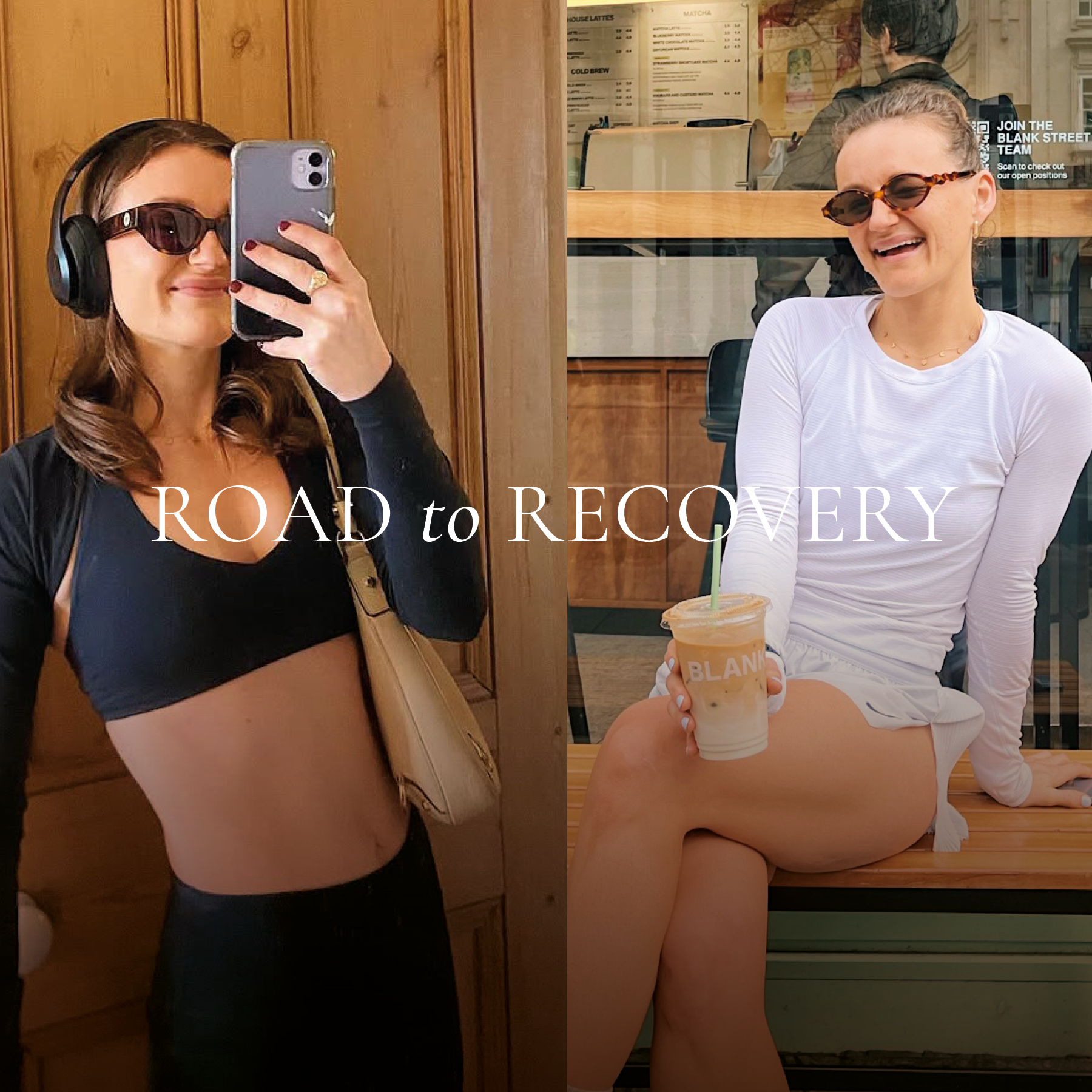 Road To Recovery: I'm a Health Editor and marathon runner who’s long struggled to make recovery a habit - enter, my lazy girl's guide to R&R
Road To Recovery: I'm a Health Editor and marathon runner who’s long struggled to make recovery a habit - enter, my lazy girl's guide to R&RRecovery is all too easy to skip when you’re busy, but it’s as essential as working out to boost wellbeing - which is where these handy tips come in.
By Ally Head
-
 I tried TikTok's lemon balm tea for a week to see if it can really help to reset your nervous system - my honest review
I tried TikTok's lemon balm tea for a week to see if it can really help to reset your nervous system - my honest reviewSit back and pour yourself a cup of calm.
By Anna Bartter
-
 The entire UK seems to be obsessed with saunas RN - 9 benefits to know about, if you're considering giving them a go
The entire UK seems to be obsessed with saunas RN - 9 benefits to know about, if you're considering giving them a goEnter your Scandi girl era.
By Anna Bartter
-
 Wellness Escapes: I went to Bali in search of winter sun, I came home with a new lease of life
Wellness Escapes: I went to Bali in search of winter sun, I came home with a new lease of lifeThis White Lotus-style sanctuary taught me how to relax
By Mischa Anouk Smith
-
 As Mel Robbins' Let Them theory gains global traction - how the simple tool promises to transform your life
As Mel Robbins' Let Them theory gains global traction - how the simple tool promises to transform your lifeNot to mention, help you take back control.
By Katie Sims
-
 I tried Jennifer Aniston's 80/20 approach to wellness - and can't tell you how refreshing I've found it
I tried Jennifer Aniston's 80/20 approach to wellness - and can't tell you how refreshing I've found itIt's all about balance.
By Katie Sims
-
 It's one of the most fun home workouts you can do: 6 best exercise hula hoops to add to your fitness regime
It's one of the most fun home workouts you can do: 6 best exercise hula hoops to add to your fitness regimeThey're very affordable, too.
By Amelia Yeomans
-
 Short on time and motivation? These are the 20-minute yoga workouts instructors do themselves from home
Short on time and motivation? These are the 20-minute yoga workouts instructors do themselves from homeIt turns out, a little bit of yoga goes a long way.
By Rebecca Shepherd
